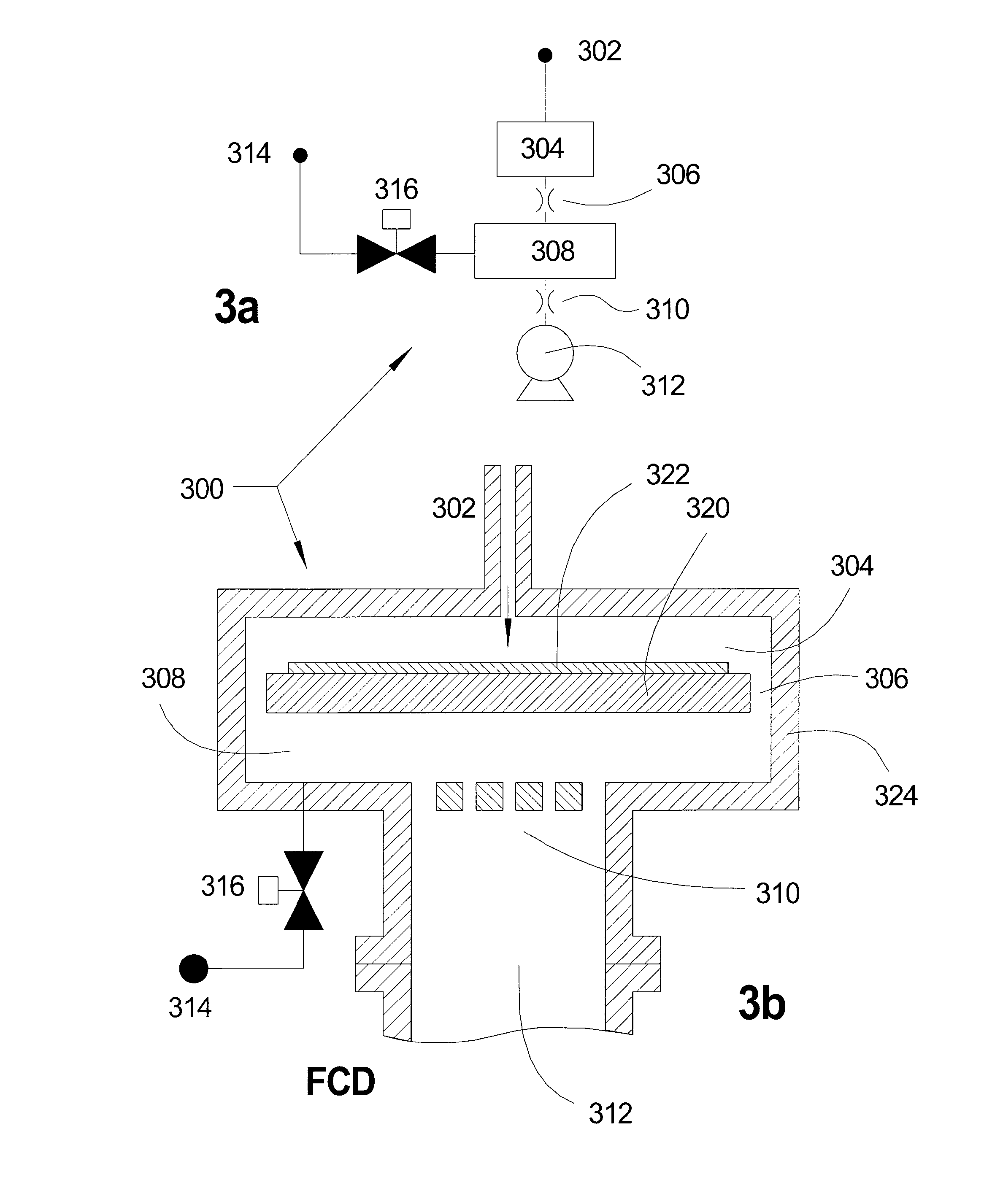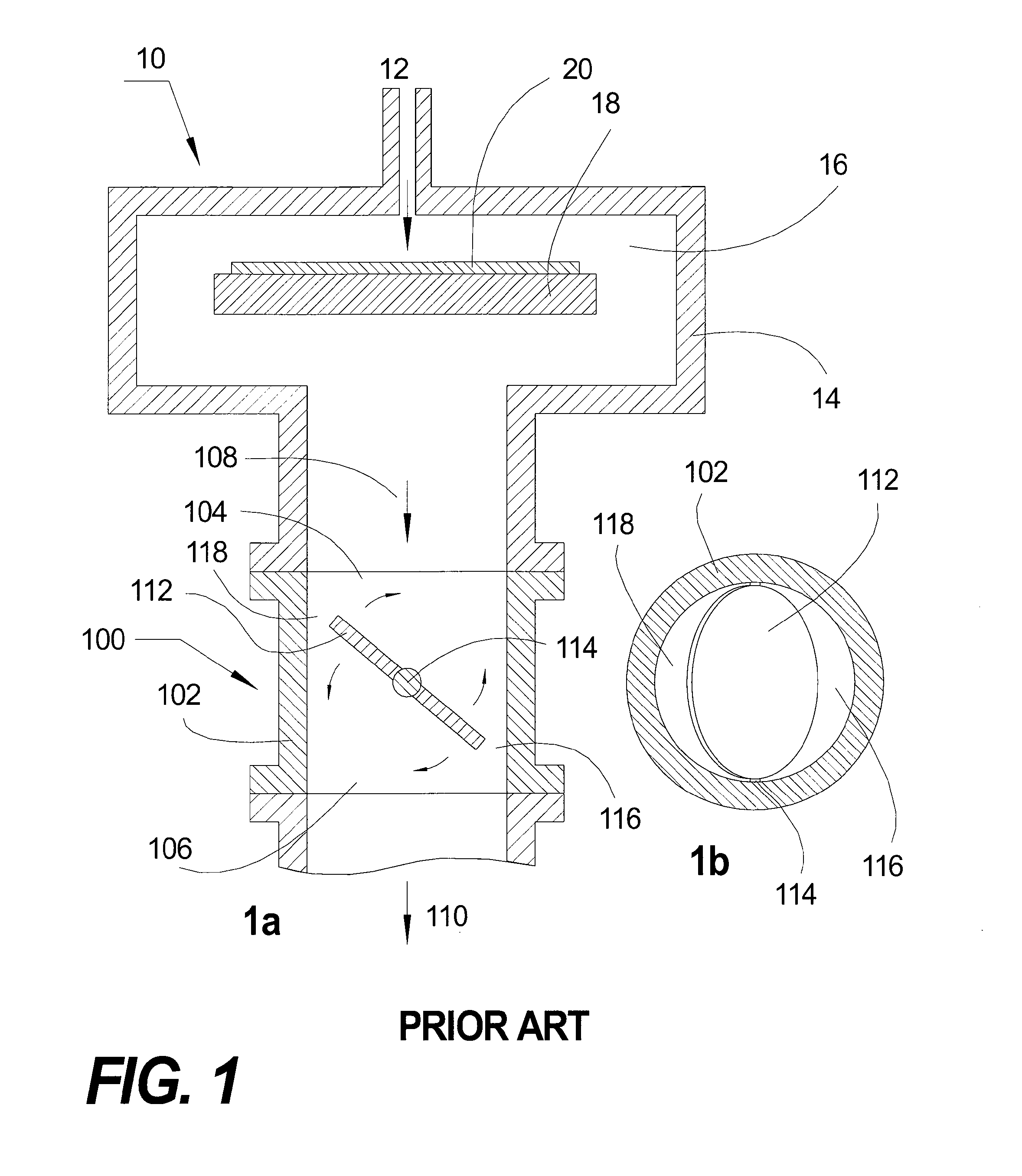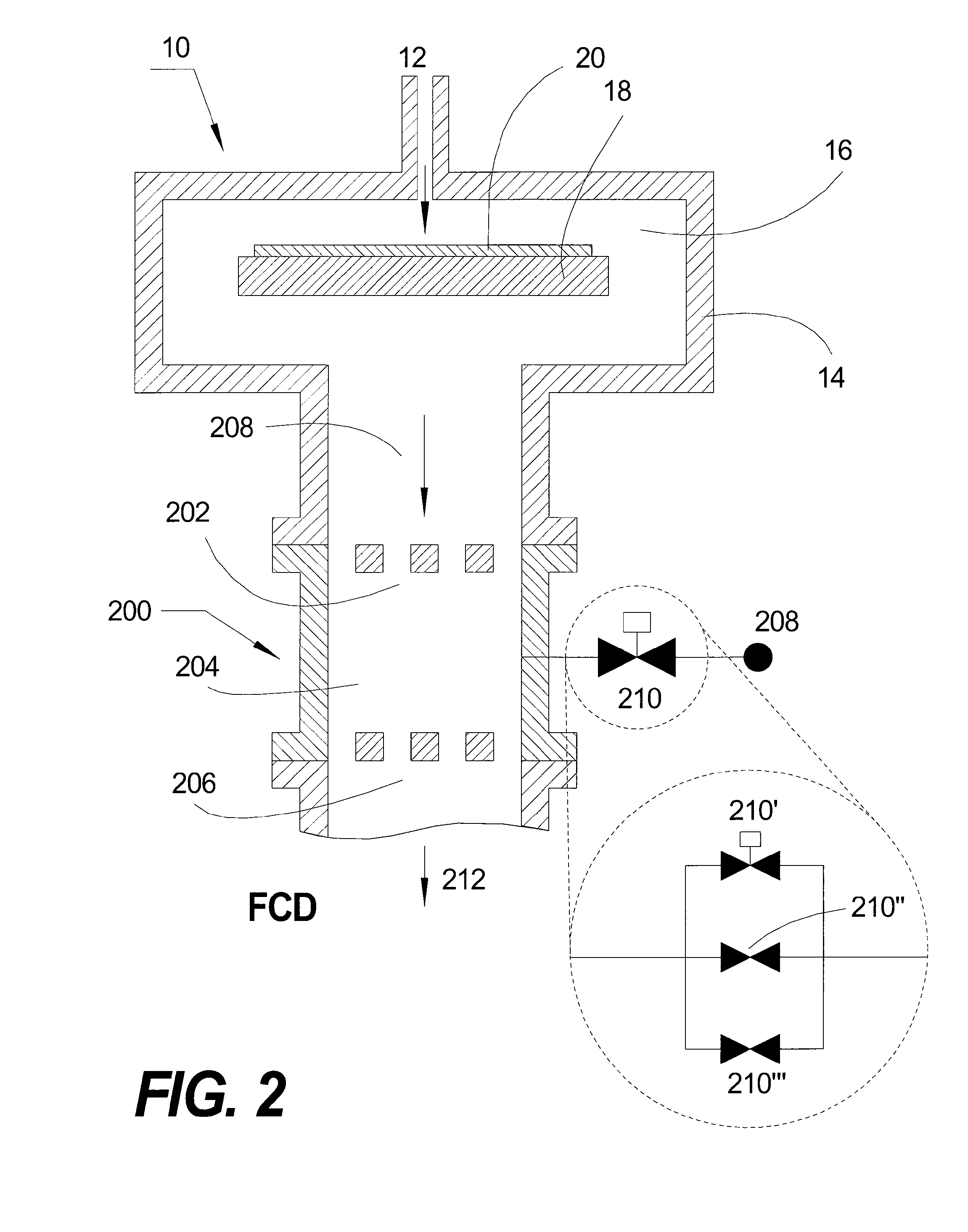Apparatus and method for downstream pressure control and sub-atmospheric reactive gas abatement
a technology of sub-atmospheric reactive gas and apparatus, which is applied in the direction of chemical vapor deposition coating, transportation and packaging, coating, etc., can solve the problems of clogging the valve, affecting the flow rate of the valve, and the inability to meet the requirements of the flow rate, so as to achieve optimized and smooth flow passage, the effect of fast respons
- Summary
- Abstract
- Description
- Claims
- Application Information
AI Technical Summary
Benefits of technology
Problems solved by technology
Method used
Image
Examples
embodiment 700
[0097]Higher capacity for abatement of chemicals such as TEOS can be achieved by another preferred embodiment, 700, depicted in FIG. 8. For example, FIG. 8 implements the PCC similar to the embodiment depicted in FIG. 3 and described with reference to FIG. 3. Accordingly, PCC 308 is implemented as a compartment within vessel 324. PCC 308 may include an abatement element (not shown). In addition or as an alternative, the abatement is carried further downstream within abatement chamber 740. Adverse effluent reaction and solid film deposition in the foreline leading to abatement chamber 740 is suppressed by wall-protected conduit elements. For example, 3 elements, 710, 720 and 730 are depicted in FIG. 8. For example the wall protected elements are implemented as described with reference to FIG. 4, above. Pumps and additional downstream foreline are represented schematically by 750. According to preferred embodiment 700 abatement can include larger volume of chamber 740 with higher abat...
embodiment 800
[0098]In another example of the preferred embodiment, 800, (FIG. 9) a much higher abatement capacity is implemented downstream from a batch processing reactor such as a vertical furnace LPCVD reactor. Reactor 802 is connected through FRE 804 to PCC 806 for FCD downstream pressure control in accordance with the present invention. Process pressure is controlled by the flow of gas from source 810 through a proportional valve (or valves arrangement as described above with reference to the inset in FIG. 2) 812. Effluents exit PCC 806 through FRE 808 into wall protected conduit 820 (shown only schematically) and enter abatement chamber 826 though isolation gatevalve 822 and FRE 824. Reactive gasses are supplied to abatement chamber 826, for example from sources 832 and through valves 834. The exhaust gas further exit abatement chamber 826 through FRE 828 and isolation gatevalve 830. Additional foreline 840 and pumps 842 are shown only schematically. In embodiment 800, very large capacity ...
PUM
| Property | Measurement | Unit |
|---|---|---|
| pressure | aaaaa | aaaaa |
| pressure | aaaaa | aaaaa |
| pressure | aaaaa | aaaaa |
Abstract
Description
Claims
Application Information
 Login to View More
Login to View More - R&D
- Intellectual Property
- Life Sciences
- Materials
- Tech Scout
- Unparalleled Data Quality
- Higher Quality Content
- 60% Fewer Hallucinations
Browse by: Latest US Patents, China's latest patents, Technical Efficacy Thesaurus, Application Domain, Technology Topic, Popular Technical Reports.
© 2025 PatSnap. All rights reserved.Legal|Privacy policy|Modern Slavery Act Transparency Statement|Sitemap|About US| Contact US: help@patsnap.com



